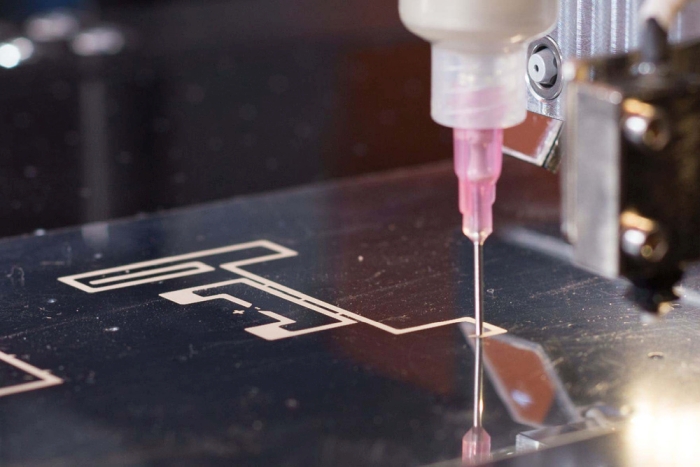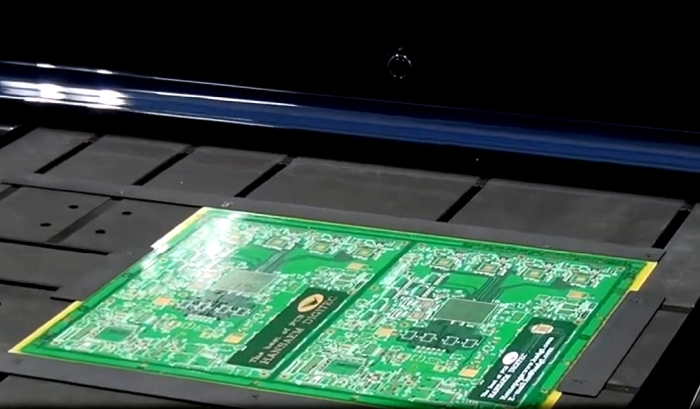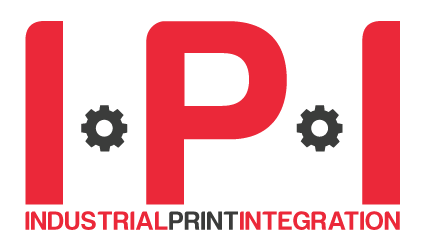Electronics is one of the most dynamic frontiers for inkjet. From flexible PCBs to structural sensors, inkjet enables new form factors, potentially greener processes, and rapid prototyping. Yet the promise of printed electronics is only realized when research transitions into scalable production. At IPI, this theme is amplified by the first-ever OEM Perspectives track, giving voice to those who must integrate printing into real manufacturing environments.
3D AND STRUCTURAL INTEGRATION
Traditional electronics are flat. But markets — from automotive interiors to wearables — increasingly demand functional electronics embedded into curved or 3D parts. Didier Rousseau, Founder & CEO of KELENN Technology frames this as a complete process chain challenge: surface prep, ink formulation, robotic motion control, and deposition strategies must all align to ensure adhesion and resolution on complex geometries. Inkjet’s drop-on-demand precision makes it a candidate technology, but only when paired with robotics and adaptive toolpaths. His perspective shows how combining robotics with inkjet demonstrates feasibility to integrate electronics into curved and 3D parts.
12 November 2025, 14:55: “3D Structural Printed Electronics: Overcoming Surface, Motion and Deposition Challenges” by Didier Rousseau, Kelenn Technology
Visitor takeaway: 3D integration highlights inkjet’s potential to move beyond flat circuits into structural electronics for automotive and wearables.
 Image courtesy of Kelenn Technologies
Image courtesy of Kelenn Technologies
FUNCTIONAL INKS AND SUSTAINABILITY
Another key frontier is sustainability. Profactor’s work in multi-material inkjet highlights how conductors and dielectrics can be co-printed onto biodegradable substrates to form eco-PCBs. This not only reduces waste compared to subtractive etching but also aligns with regulatory and environmental pressures. Similar workflows enable medical devices, such as printed sensors on textiles for continuous patient monitoring, and air-quality sensing systems.
12 November 2025, 12:35: “Advancements in Multi-Material Inkjet Printing of Functional Materials for Sustainable Eco-PCBs, Medical Devices and Air Quality Sensors” by Maximilian Scherf, Profactor
Agfa’s Mitch Matthys demonstrates how functional inkjet also simplifies PCB fabrication and metal structuring: solder mask deposition, legend printing, and selective etch resist application all become single-step, digitally controlled processes. The impact is both economic and ecological — fewer chemicals, less energy, faster prototyping. His insight demonstrates how single-step inkjet processes reduce chemicals, save energy, and accelerate PCB prototyping.
12 November 2025, 17:40: “Grow Your Business, Not Your Footprint: Advancing PCB Fabrication and Metal Structuring with Functional Inkjet Technologies” by Mitch Matthys, Agfa
Visitor takeaway: Sustainable functional inks make inkjet a greener, faster alternative for electronics and healthcare applications.
OEM PERSPECTIVES: SOLDER MASKS AND BATTERIES
What makes this year’s IPI unique is the addition of OEM perspectives. Milena Fritz, CEO at SAT Electronic discusses how selective inkjet can replace conventional solder mask application, especially in flexible and rigid-flex PCBs where edge coverage is critical. Her work demonstrates how additive approaches simplify solder mask application while boosting performance in flexible circuits.
13 November 2025, 14:00: “Inkjet Printing for Solder Masks and Flexible PCBs: Development and Application” by Milena Fritz, SAT/MicroCraft
 Image courtesy SAT Electronic
Image courtesy SAT Electronic
Daan de Kubber, Manager Innovation & Development at SPGPrints turns to energy storage, presenting insights into roll-to-roll battery production. Printing on ultra-thin copper foils is challenging. It requires tight control of rheology, layer thickness, and registration. By adapting conventional print technologies and integrating electrode/electrolyte pastes, SPGPrints highlights the practical challenges of scaling lab concepts into industrial battery lines. His insights reveal the real-world hurdles of battery printing — and what adaptations helps scale lab processes into production.
13 November 2025, 14:25: “Roll to Roll Battery Production: Innovations in Materials and Print Technology” by Daan de Kubber, SPGPrints
Peter Ueberfuhr, CTO and Founder of C-marx GmbH, brings over 15 years of expertise in industrial inkjet printing, process development, and system integration. His contribution highlights the need for a universal inkjet platformto accelerate industrial adoption.
13 November 2025, 14:50: “Universal Inkjet Platform for Next-Generation Industrial Printing” by Peter Ueberfuhr, C-marx
Visitor takeaway: OEM perspectives confirm that inkjet is moving from research to production, addressing everyday factory challenges.
WHY IT MATTERS
Printed electronics has long been framed as a “future” technology. But with OEMs now actively engaging, it is becoming clear that the future is arriving. Inkjet is not replacing traditional processes wholesale, but integrating selectively where it adds most value: personalization, complex geometries, and sustainable workflows.
IPI’s printed electronics and OEM perspectives track makes visible the bridge from lab to line. It shows how functional inks, additive strategies, and real-world manufacturing needs intersect.
See the complete IPI 2025 programme and plan your track.


